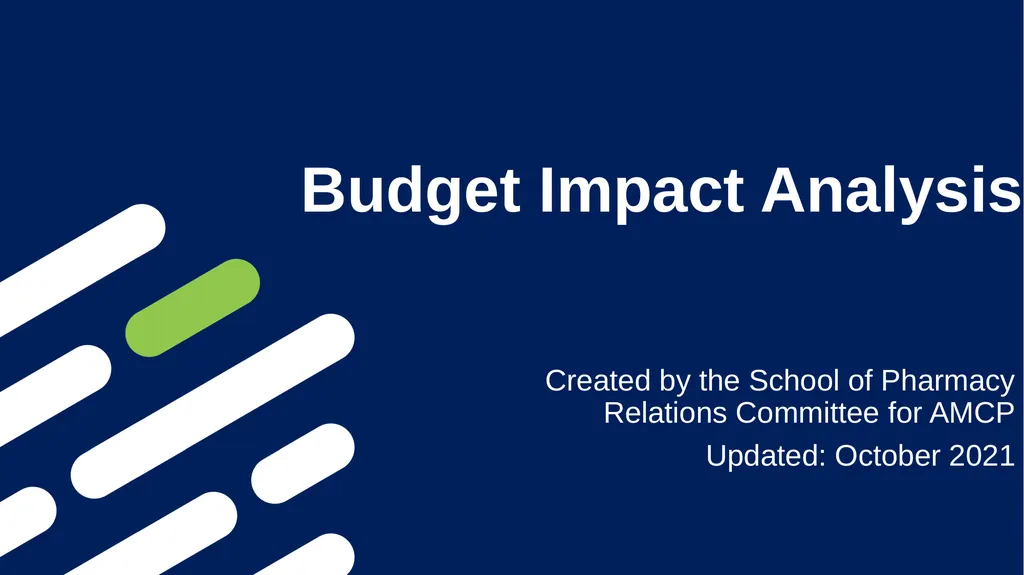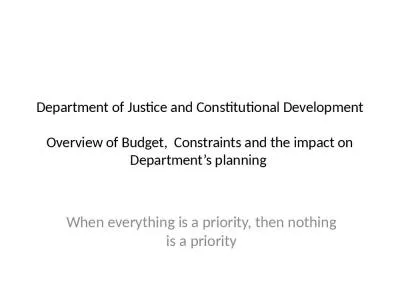Budget Impact Analysis Created by the School of
Author : danika-pritchard | Published Date : 2025-06-23
Description: Budget Impact Analysis Created by the School of Pharmacy Relations Committee for AMCP Updated October 2021 Overview Introduction to budget impact analysis BIA Differentiation between BIA vs costeffectiveness analysis CEA Designing
Presentation Embed Code
Download Presentation
Download
Presentation The PPT/PDF document
"Budget Impact Analysis Created by the School of" is the property of its rightful owner.
Permission is granted to download and print the materials on this website for personal, non-commercial use only,
and to display it on your personal computer provided you do not modify the materials and that you retain all
copyright notices contained in the materials. By downloading content from our website, you accept the terms of
this agreement.
Transcript:Budget Impact Analysis Created by the School of:
Budget Impact Analysis Created by the School of Pharmacy Relations Committee for AMCP Updated: October 2021 Overview Introduction to budget impact analysis (BIA) Differentiation between BIA vs. cost-effectiveness analysis (CEA) Designing BIA Considerations and models for conducting BIA Helpful resources Introduction of BIA Definition of BIA A budget impact analysis (BIA) is: an evidence-based analysis used to assess the financial consequences of the adoption of a new intervention, given the available budget and resources. Purpose of BIA BIA is essential for budget and resource planning as it aids decision-making for reimbursement authorities/budget holders/payers. Formulate a short term (typically 1 to 5 years) estimate of the changes in expenditure, cost, and healthcare utilization after the adoption of a new intervention. Predict the budget impact of a new intervention in the population. Predict the characteristics of the population and the healthcare system after adoption of the new intervention. Differentiation between BIA vs. CEA Designing BIA BIA Overview Identify budget holder/ perspective Identify the budget holder for whom the BIA is conducted - Is the budget holder a private payer or a regional/national healthcare system? Consider the features that influence the budget and the coverage decision - Who and what are being covered under the health system? - What are the access restrictions to reimbursement? Consider the perspective of the budget holder - Should the BIA include healthcare costs only or other societal costs (travel expenses, lost productivity, unemployment benefits, etc.)? What is the current intervention mix? Identify the size of the total population (eg, plan size) Identify the size of the target population (all patients eligible for the new intervention) Identify the current interventions (comparators) being used and the market share of those interventions in the target population - May include no intervention, alternatives, combination therapies, and off-label drugs. - Often times nationally recognized treatment guidelines are a good source for identification of all potential comparators in a target population Know the effect of the new intervention Identify the role of the new intervention and its effect on the current market Substitution: the new intervention replaces the current interventions. Combination: the new intervention is used in combination with the current interventions. Expansion: the new intervention is an alternative option for patients who have stopped or refused available interventions for any reasons. Supportive care: the new intervention is used in a market where no active intervention is available. Assumptions Assumptions are often introduced














